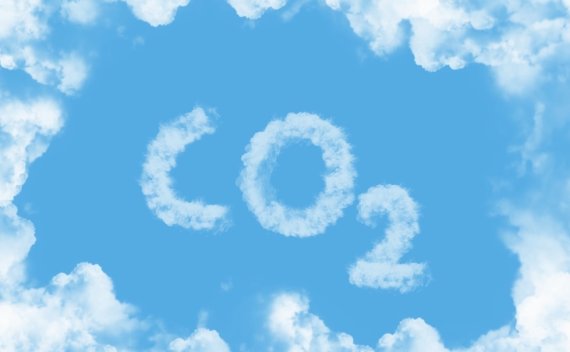You can filter CO2 out of the air. And WUR is going to work with Shell to optimize this process. That is one of the four WUR proposals that the Dutch Research Council NWO is going to finance from its LIFT programme.
Capturing CO2 is one way of removing the greenhouse gas from the atmosphere. The most common way to approach this is through absorption of CO2 by specific materials. ‘But no one knows exactly what the optimal material for capturing CO2 and then releasing it again under the right conditions would look like,’ says Professor Harry Bitter (Biobased Chemistry & Technology).
Sponge
Bitter and postdoc Lars Kiewidt are going to study this fundamental process. They will be focusing on the capture of low concentrations of CO2, explains Bitter. ‘We are not talking about factory chimneys, but more about exhaust fumes from cars and planes. The relatively simple and solid materials, carbon and potassium carbonate (a salt) are used as a ‘sponge’ or filter. Besides efficient capture, their capacity for desorption of CO2 (releasing it again) play a big role.
Water is essential for desorption, but has a dramatic impact on the characteristics of the filter
Harry Bitter
‘We don’t just want to capture CO2, but also to be able to make use of it by making chemicals out of it,’ explains Bitter. This means the filter can theoretically be reused endlessly, and needs to last years. The problem is, however, that the water that is necessary for desorption has a dramatic impact on the characteristics of the filter. Exactly how that works is something we want to understand better. A PhD student is going to work on that.’
Sensors
Chemist Louis de Smet (Organic Chemistry) has received an NWO LIFT grant to make better sensors for detecting ions (charged particles) in solutions. According to De Smet, this is relevant for applications in horticulture (nutrients) and the medical world. The sensors we have currently have a limited lifespan due to pollution and wear and tear of their surface. De Smet wants to tackle these shortcomings with polymers. ‘The idea is to add polymers to the surface of the sensor.’
‘Those polymers bind a layer of water, which protects the sensor like a kind of coating,’ he goes on to explain. ‘Dirt, such as proteins, can only reach the sensor if it gets through the water. But that takes energy.’ De Smet also wants to use polymers to prevent wear and tear of the sensor. ‘The active part of the sensor consists of a coating that absorbs ions. That ion binder is dissolved in the coating and slowly drains away. I want to prevent that by fixing those components with polymers.’
Vital pigs
De Smet is implementing this project together with Imec (OnePlanet). He too can use some of the money to engage a PhD student. The remaining two projects focus on the genetic selection of healthy, vital pigs (Martien Groenen, professor of Breeding & Genomics) and the steering systems of light, autonomous farm vehicles (Sytze de Bruin, Geo-Information Science and Remote Sensing).
The four projects are funded from the NWO’s LIFT programme (which is now nearing its end). The programme stimulates companies and research institutes to develop innovative technology together. Four of the 14 winning proposals came from WUR, making it the Dutch university that won the most grants.

 ©Shutterstock
©Shutterstock 